
(Class Insecta, Order Diptera)
Invertebrates Around Las Vegas, Wildlife Around Las Vegas
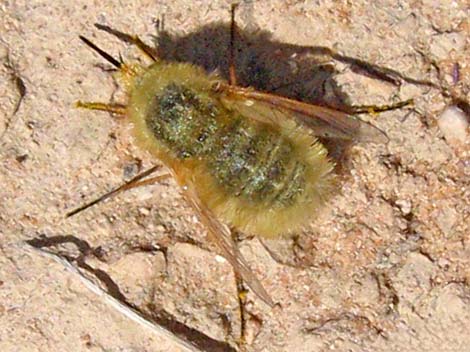 |
General: Bee Flies (Bombyliidae) are a diverse group of some 4,500 described species and many more as yet undescribed. In North America, there are over 900 described species. Although diverse, the numbers of individuals tend to be low in any particular area, but they are more common in the arid Southwest than elsewhere. Most are recognized by their relatively medium to large size, stout bodies, long dense hairs, and long, slender proboscis. At rest, the wings are held out to the side. Some bee files are hairless. Apparently, the biology of the group is poorly known, but adults feed on pollen and nectar, thereby contributing to flower pollination. In contrast, most bee fly larvae are parasites or predators on the larval stages of other insects (e.g., wasps, bees, other flies, caterpillars, and beetles). Female bee flies lay eggs in or near the nests of target species, and after hatching, bee fly larvae feed on their hapless victims. Some bee fly larvae are predators and seek out grasshopper eggs. |
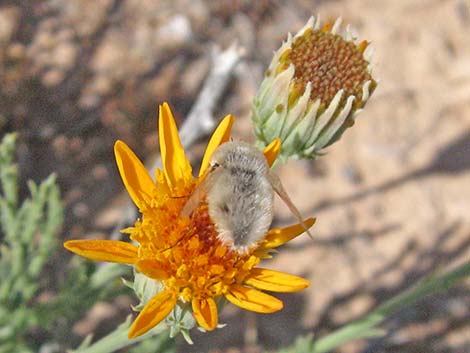 Bee Fly (Lordotus spp.), note the long, dense hairs. |
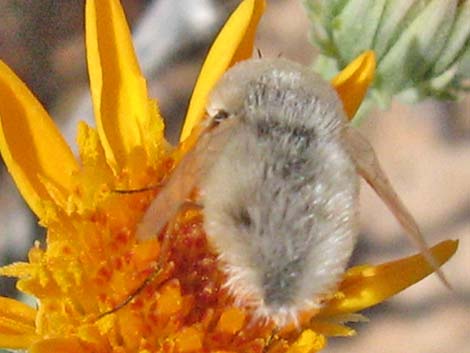 Bee Fly (Lordotus spp.), note the long, dense hairs. |
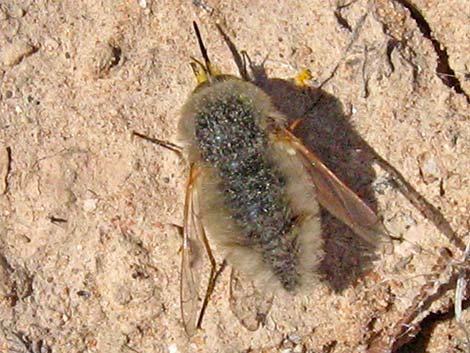 Bee Fly (Lordotus spp.) |
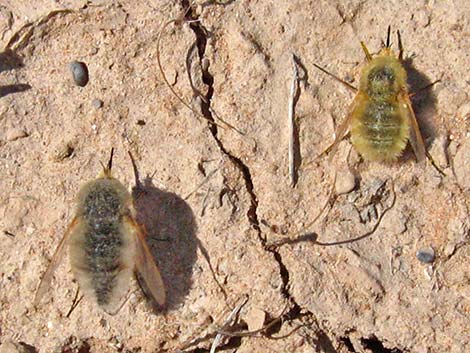 Bee Fly (Lordotus spp.). Male and female resting on the ground. |
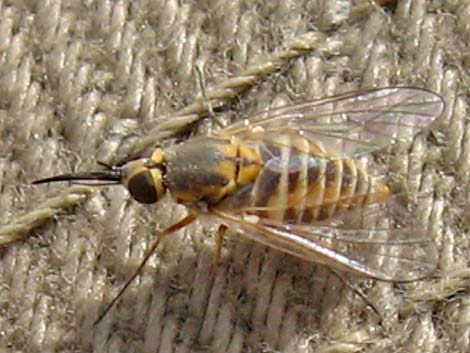 Hairless Bee Fly (Subfamily Phthiriinae, Neacreotrichus) |
 More to come ... |
Note: All distances, elevations, and other facts are approximate.
![]() ; Last updated 240202
; Last updated 240202
| Inverts Around Las Vegas | Wildlife Around Las Vegas | Glossary | Copyright, Conditions, Disclaimer | Home |